Shoemaking is a traditional craft that has been passed down through generations in Nigeria. In Nigeria, a range of knives, hammers, pliers, and other hand instruments are used for shoemaking.
Let’s start with the lasts. The last is a form that is used to shape and fit a shoe. Lasts come in a variety of materials, including wood and plastic, but they all perform the same purpose. The last shapes the shoe and determines how it will fit on the wearer’s foot.
Following that, we’ll go through cutting tools. Knives, scissors, and shears are examples. Leather, fabric, and thread are all sliced with cutting tools. It would be difficult to construct a shoe without the use of cutting tools.
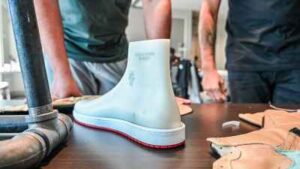
Stitching tools are another essential component of the shoe-making process. Needles and awls are examples of these. They are used to manually stitch the shoe’s various sections together and to connect the sole. The shoe would not be able to keep its shape if stitching tools were not used.
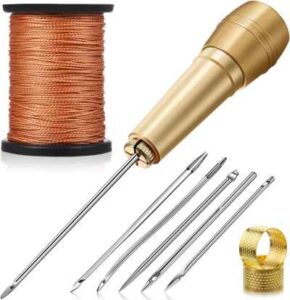
Hammers and punches are also essential shoemaking tools. A leather hammer and a hole punch are among them. These tools are used to mold the leather and make stitching holes. The leather could not be molded to the shape of the final without the use of a hammer and punches.
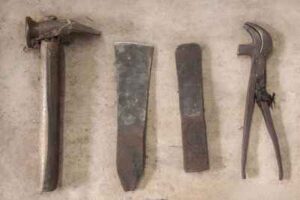
To generate a completed product, grinding and finishing tools are also required. Sandpaper and polishing wheels are examples of this. These tools are used to smooth the leather edges and give the shoe a glossy appearance. The shoe would appear incomplete if grinding and finishing equipment were not used.
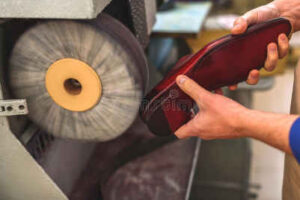
Lasting tools are also important in the procedure. Pincers and long-lasting pliers are examples of such tools. They are utilized to secure the shoe’s upper to the sole and shape the toe. Without long-lasting tools, the shoe would lose its shape.

A knife is one of the most essential pieces of equipment for shoemaking. Knives are utilized to cut leather and other materials. The “clicking knife” is a common type of knife used in shoemaking for cutting patterns into leather. Other knives that can be utilized include paring knives, skiving knives, and last knives (the wooden or plastic shape the shoe is constructed around).

A hammer is another essential shoemaking instrument. Hammers are utilized for driving nails and other hardware into shoe soles. Additionally, they can be used to shape and mold leather. The “rawhide hammer” is a common type of hammer used in shoemaking; it has a wooden handle and a rawhide head.
ALSO SEE: Louis Vuitton Shoes Price in Nigeria
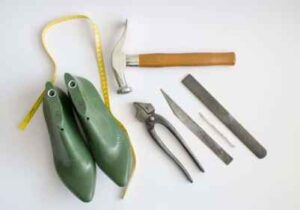
Additionally, pliers are an essential component in shoemaking. They can be used to grasp materials and hardware. The “leather pliers” are a common type of pliers used in shoemaking; their flat jaws are good for holding leather.
There are other specific instruments used in shoemaking, such as a sewing pony, a wooden tool that helps keep the leather in position during stitching, and a shoemaker’s awl, which is used to make holes in the leather prior to stitching.
Prices of shoemaking instruments in Nigeria can vary based on brand and quality. However, because the majority of the instruments are produced locally, the prices are reasonable. For example, a clicking knife can cost between 1,000 and 2,000 naira, a hammer can cost between 1,000 and 1,500 naira, and a set of leather pliers can cost between 2,000 and 3,000 naira. Depending on the location and origin of the tools, prices may vary.
To produce high-quality shoes, it is essential to use high-quality tools. Shoemaking is an art that takes talent and attention to detail; therefore, it is essential to invest in high-quality instruments in order to produce a superior result.
A List of Shoe Making Tools and their Names
A list of shoemaking instruments with their respective names
Here is a list of common shoemaking instruments and their respective names:
- Last – a wooden or plastic form is used to form the shoe
- Lasting pliers are an instrument used to stretch the upper onto the last.
- A skiving knife is a blade used to thin or shave leather.
- A hole punch is a tool used to create lacing or stitching holes in leather.
- A sewing awl is a hand-sewing tool for leather.
- Sewing pony – a clamping device used to hold many leather pieces together during stitching.
- Edge beveler – a device used to smooth and round leather’s edges
- Groover – a device used to produce stitching grooves in leather
- Shoe hammer – an instrument used to pound nails or tacks into the sole of the footwear.
- Lacing awl – a tool used to produce lacing or stitching holes in leather.
Additionally, scissors, a paring knife, a cutting mat, and a steel ruler are useful equipment.
Please note that this list is not inclusive; different shoemaking techniques and styles may necessitate the use of additional tools.
Please note that this is not a comprehensive or extensive guide of shoemaking tools in Nigeria; there may be variances dependent on region, availability, and brand. If you are looking for more precise information, it is advisable to contact local shoemakers and suppliers directly.
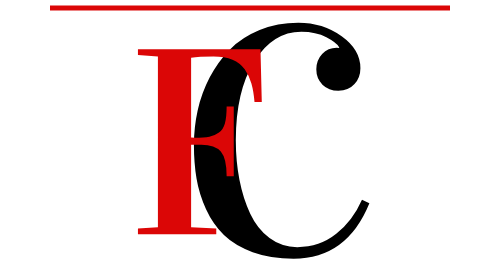
Really educating . Thanks